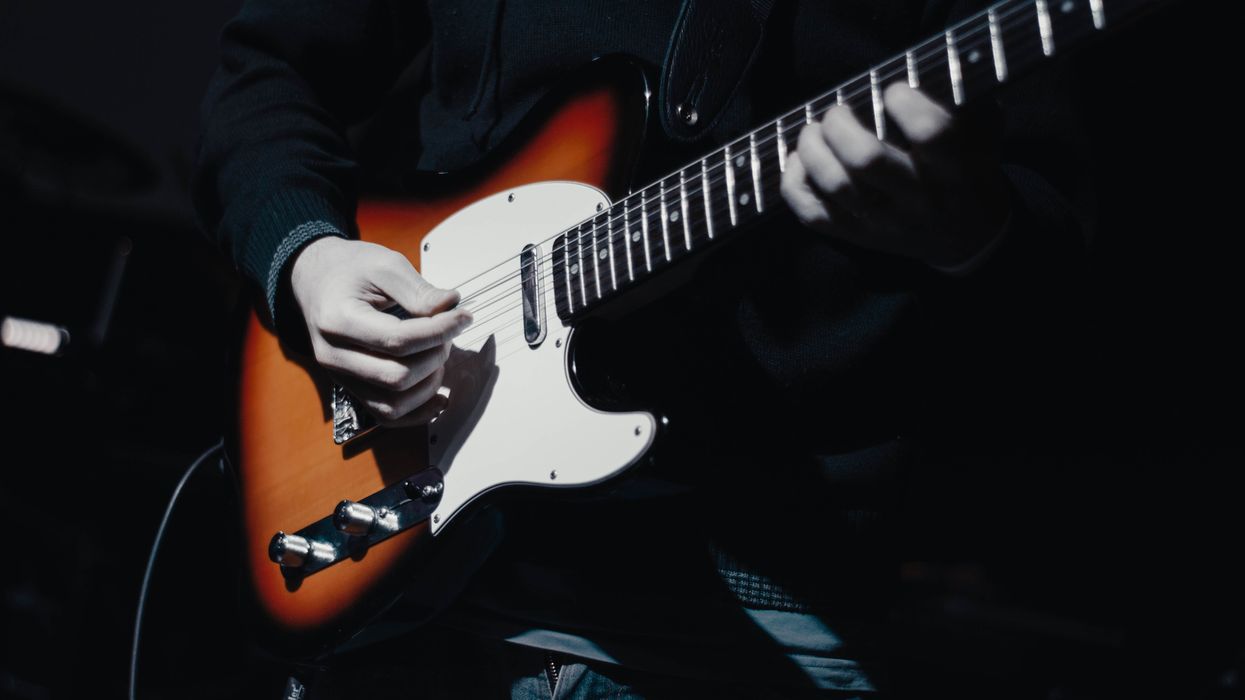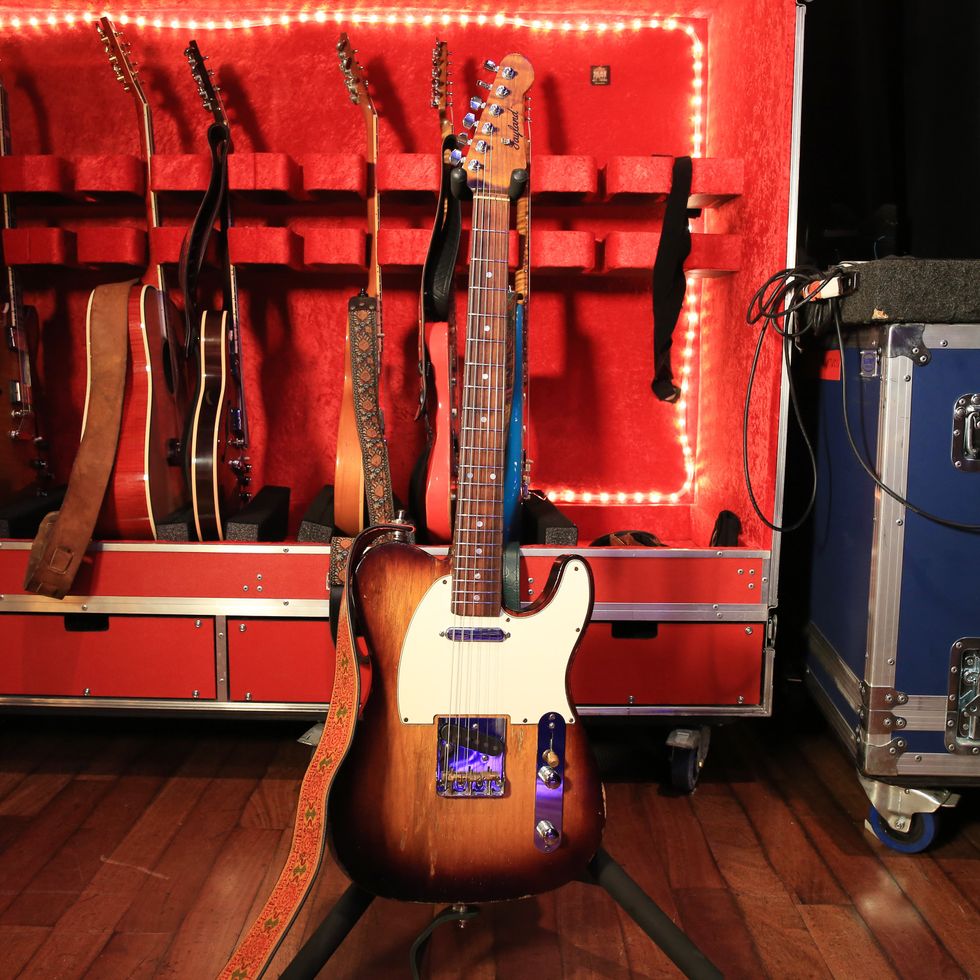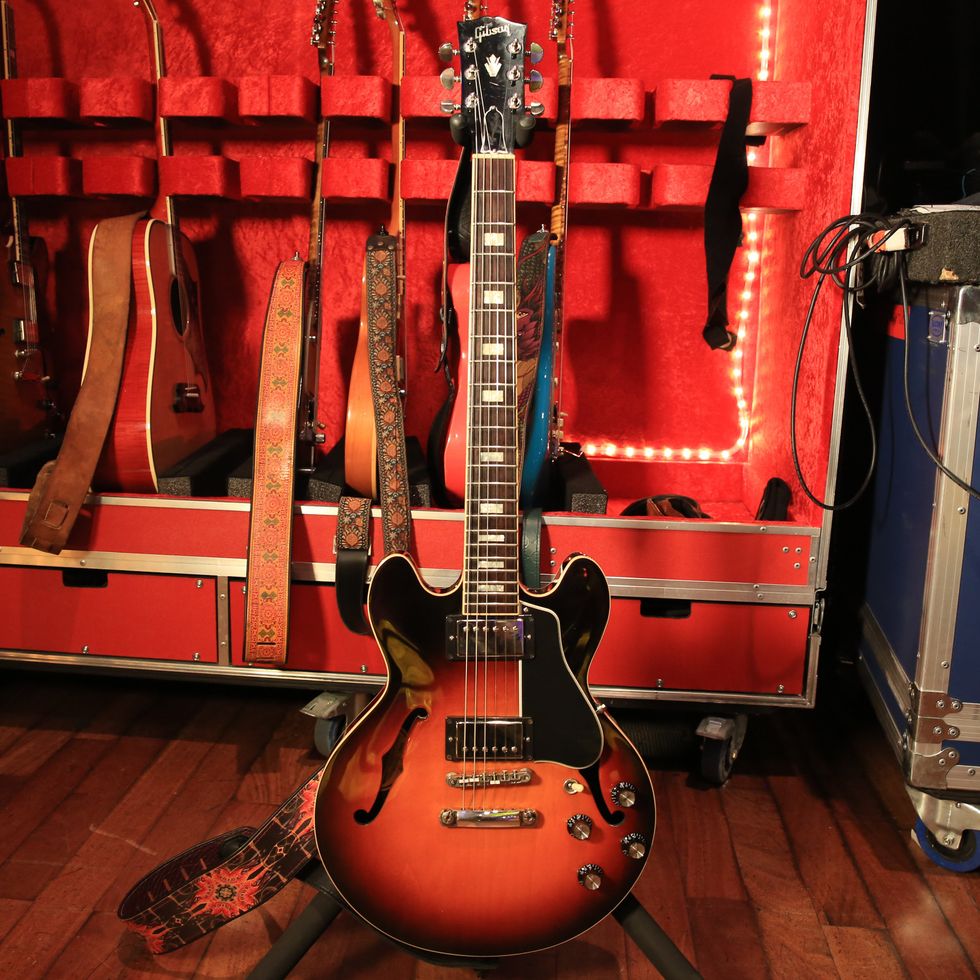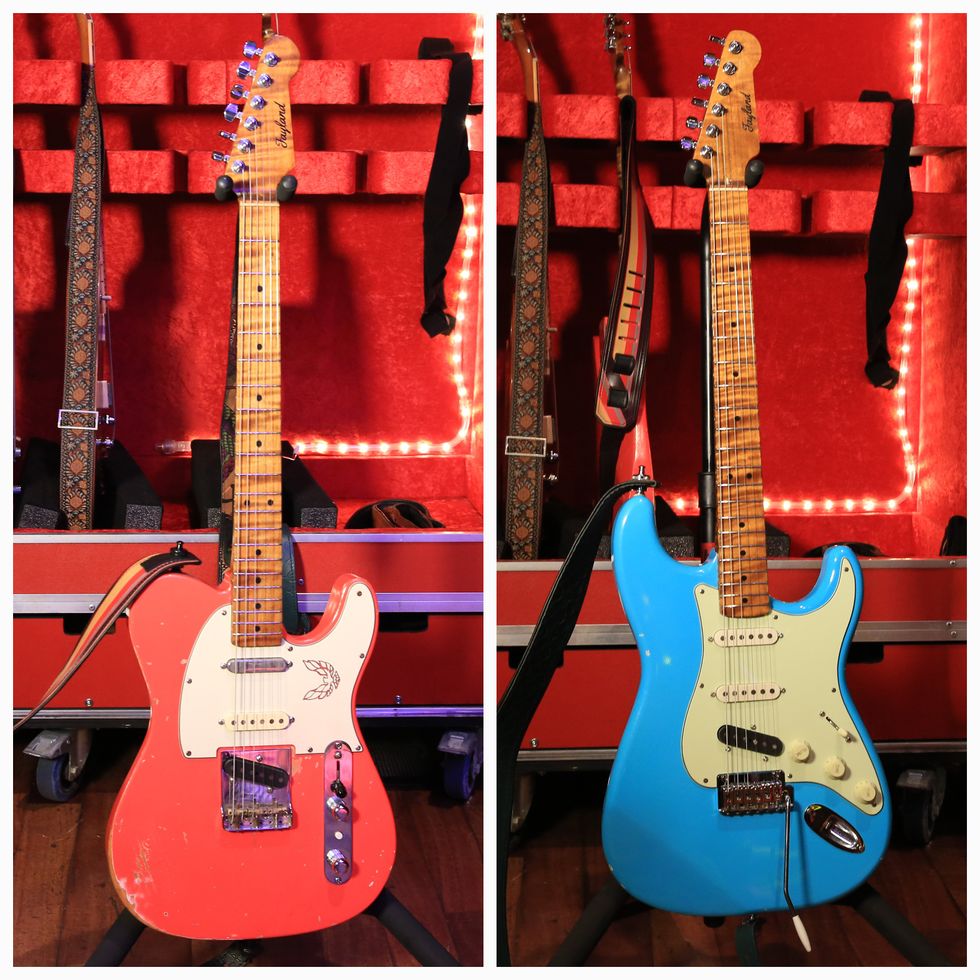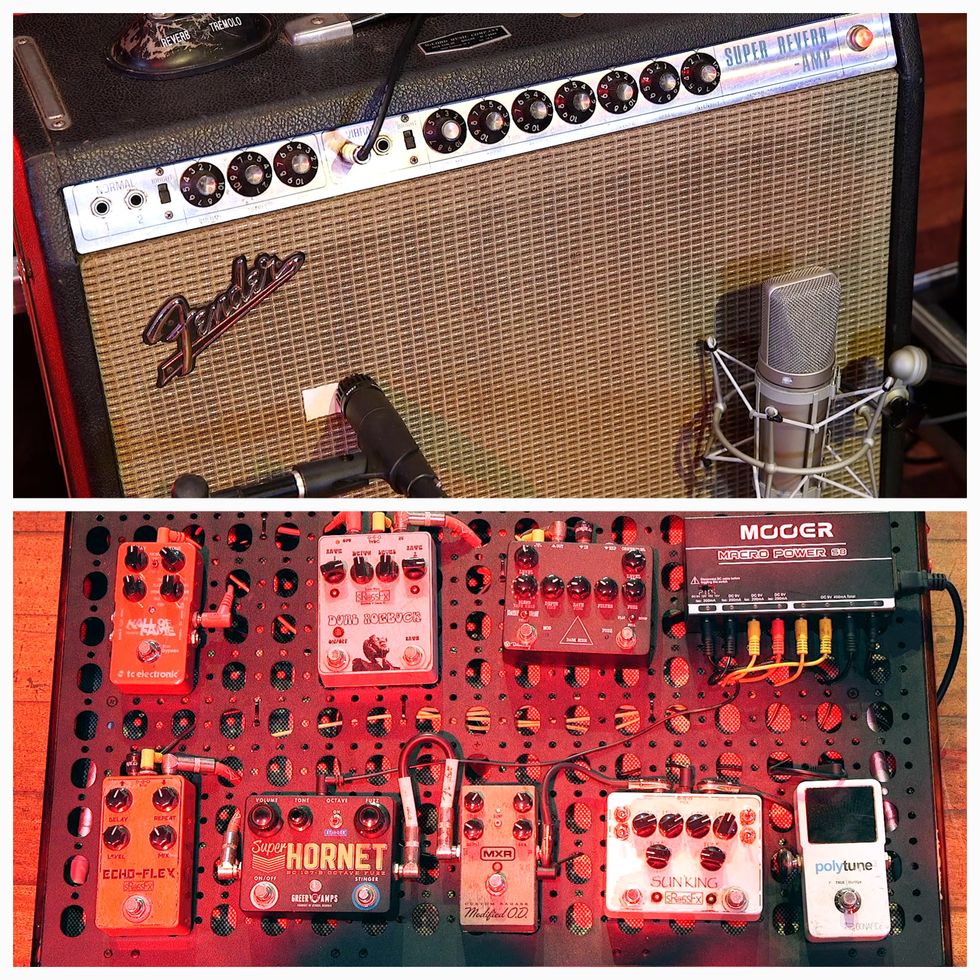As inspiring as it is to hear Chet Atkins play some mind-bending fingerstyle licks, it can be quite daunting to decode what he’s doing. Where do all those sounds come from? How do we create our own tunes or arrangements in that style?
It’s useful to break a big job down into smaller parts, and “Chet-style guitar” certainly benefits from that approach. We’ll break this technique down to the smallest components; once we understand the elements, we’ll then be able to build up arrangements using this knowledge. Practicing this way helps beginners form good habits, and it also gives experienced players a chance to identify and fix bad habits that are often the result of ineffective practice.
Gaining independence between the picking-hand thumb and fingers is the foundation of all Chet-style playing, and we’ll be focusing on this foundational aspect most of all in this lesson. Because this style often involves moving shapes and bass lines, a few fretting-hand fingering suggestions are provided next to the noteheads in the standard notation clef. If you’re a tab reader, feel free to just glance at the standard staff for fingering suggestions if a passage is feeling clumsy or you feel the need for some guidance.
Here’s a tip: For authentic tone, place the back of your picking-hand palm just behind the bridge to mute the bass strings. This will serve you well as you begin to develop a strong groove with your thumb.
Although the alternating bass that’s characteristic of Chet’s playing owes much more to Merle Travis than Blind Blake, country-blues players would often drone one bass string below a melody played on the treble strings, as in Ex. 1. This “steady thumb” blues approach is a great way to learn how to keep rock-solid time with that digit. In his formative years, Chet heard a lot of different kinds of music, including pre-war blues. With the quarter-note bass, be sure to practice with a metronome to internalize a good sense of time, and ultimately, groove.
Ex. 1
After establishing the bass, add in melody notes. If a measure is challenging, even a single example can be broken down into smaller parts. Think of each measure in Ex. 1 as a separate exercise. It takes a lot of practice to reach your goals with the guitar, but effective practicing is the fastest and most direct route. Practice each example, or even each measure, until it comes naturally. Be sure to make a distinction between a slow performance tempo and a slow practice tempo. There is no such thing as practicing too slowly.
Of course, it doesn’t really sound like Chet until an alternating bass is introduced, so let’s move onto a more typical Chet-style phrase in Ex. 2. Start out by simply getting used to the bass pattern in measures one and two, and then add some melody notes to the open chord shapes. By keeping the fretting hand simple, we place all our attention on forming a good groove with the picking hand.
Ex. 2
Now that we have a foundation, it’s time to start syncopating the melody, as shown in Ex. 3. The combination of alternating bass and syncopation in the melody gives the example more of a Chet-approved feel. It’s here we begin to dig into the finer details of his playing.
Ex. 3
One such detail is learning to alternate between not just two, but three notes in the bass. Some of Chet’s arrangements contain sections that move between a two-note bass pattern and a three-note bass pattern (check out “Ain’t Misbehavin’” from his 1957 release, Hi-Fi in Focus.) The three-note pattern sounds fuller and relies on having an open string available that matches the chord tone, or an extra finger free in fretted shapes. In Ex. 4 we’ll keep it simple with open shapes in the key of A and familiarize ourselves with the pattern in measures one and two.
Practice alternating the 5–4–6–4 string pattern. That will form the foundation of the house. After adding in some melody notes in measures three and four, we’ll switch to the IV chord, but this time inverting it so that the F# is in the bass. This allows us to use a new string pattern: 6–4–5–4. Those two patterns will cover 99 percent of Chet’s thumbpicking tunes.
Ex. 4
Mark Knopfler & Chet Atkins - Instrumental Medley
Mark Knopfler was one of Chet’s biggest fans and the duo released Neck and Neck in 1990 to critical acclaim. Here’s a performance from The Secret Policeman’s Ball in 1987 where the pair play “I’ll See You in My Dreams” and John Lennon’s “Imagine.”
Once the new alternating patterns are in place, add some syncopation (Ex. 5). In measure five, you’ll have to either stretch your fourth finger to reach the G# on the 1st string, or shift positions. Fingerstyle guitar is great for exercising the often-neglected fourth finger, but be careful not to overstretch or strain your fingers. If something is uncomfortable, stop and find a new position to play it in. Where there’s a will, there’s a way.
Ex. 5
Now that we’ve established a solid foundation for the thumb patterns and a good groove, it’s time to combine moving chord shapes up and down the neck with everything we’ve practiced so far. These new shapes facilitate another characteristic aspect of the Atkins style: open strings ringing against a fretted note on the adjacent string, as in Ex. 6. The example ends with a textbook Chet voicing of the A6 chord, which continues the theme of playing fretted notes against the open 1st string.
Ex. 6
When it comes to melodies, so much of the movement in fingerstyle guitar involves finding the best placement of the melody to fit comfortably within a given chord shape. Chet’s hands never moved more than necessary, and as gifted as he was, part of his genius was a masterful economy of motion. One effective way to move around the neck and accommodate a shifting melody is to slide your hand down to the target pitch. In measure one of Ex. 7, for instance, notice how I slide from C# down to A to shift positions. In the next measure, I use a bass line to move up into 10th position for the IV chord. Although the melodies and tunes vary, the approaches and techniques recur time and time again.
Ex. 7
In a 4/4 fingerpicking groove, very often either the 2nd or 4th beat (or sometimes both) will involve a bit of a strum. Chet’s thumbpick would drag onto the 3rd string so that the muted bass was heard in conjunction with the clarity of an open string or fretted note. Often this blended into the total picture he was painting, and on his classic recordings with drums and bass, this can almost be lost to the ears, but it is an important part of the finer details. Simply listening to a lot of old Chet Atkins recordings is the best way to internalize this sound and feel, but like anything, eventually it needs to become personalized via practice.
In Ex. 8 we move the sound from our ears into our hands. Try to place the strum exactly where indicated in the notation to get used to adding this detail into the mix. In the long run, you’ll find it becoming entirely natural and a bit arbitrary exactly where—or even if—you want to strum. The technique becomes more of a mindset than a literal move to perform the same way every time. Have fun with it and remember that Chet never played anything exactly the same way twice. This example concludes with a classic Chet-style single-note lick that features fretted pitches alternating with a recurring 3rd-string drone.
Ex. 8
As a great admirer of Johnny Smith and many other jazz guitarists, Chet was always expanding his vocabulary of chords and harmony. Learning chord inversions is essential to incorporating both harmony and melody in your arrangements. Early on, Chet’s inversions owed much more to Merle Travis than Lenny Breau, but he never stopped expanding.
In Ex. 9 we look at a classic Chet inversion of a D7 chord, placing the F# (3) on the 6th string, with the b7 on the 5th string at the 3rd fret. To make this shape, the left-hand thumb wraps around the neck to grab the low F#, leaving the remaining fingers free to fret the other pitches. An open 1st string sounds great against this shape and is a frequent melody note when Chet uses this inversion. Continuing onward with the left-hand thumb, the G/B on beat 3 of measure three creates a nice ascending bass line on the way to the IV chord (C). We then descend through the G/B again on the way to a D9 shape that places the A note in the bass on beat 1. This gives us a bass line that both ascends and descends. This isn’t merely effective hand positioning, but also musical voice leading and bass motion.
Ex. 9
With all the pieces of the puzzle now coming together, let’s combine every concept we’ve worked on in Ex. 10. Although it seems like a lot to keep track of, anyone can play anything if it is slow and isolated enough. Whether you’re just starting out or a seasoned pro, remember that the big picture is composed of effective, tiny steps. Take as much time as you need to master each component—no one has ever been able to learn it all within a life and Chet never stopped learning either. Approaching the guitar one note at a time is the surest way forward.





